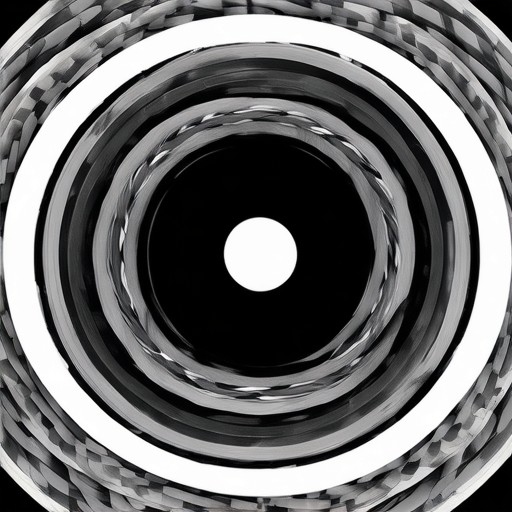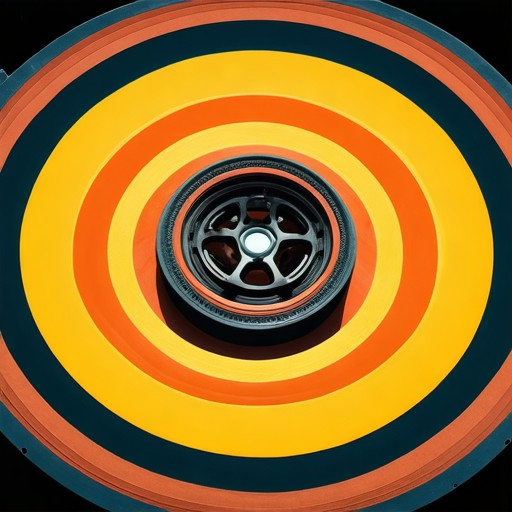Adjusting wheel offset is a critical aspect of optimizing vehicle performance, ensuring stability, and maximizing fuel efficiency. Whether you’re tuning a car, motorcycle, or even a lawn mower, achieving the perfect wheel offset is essential for smooth operation and longevity. This adjustment involves aligning the wheels precisely, which directly impacts how the vehicle handles turns, accelerates, and maintains balance. In this guide, we’ll explore everything you need to know about wheel offset adjustment, including tools, techniques, and common mistakes to avoid. From understanding what a +15 offset looks like to determining whether your current setup is spot-on, this comprehensive guide will walk you through the process step-by-step. By mastering the art of wheel offset adjustment, you’ll not only enhance your driving experience but also extend the life of your tires and suspension components. Let’s dive in and uncover the secrets to achieving the ideal offset for your vehicle!
Key Takeaways
- Wheel Offset Too Low Can Lead to Major Performance Issues: Incorrectly low wheel offset can cause tire rubbing, reduce traction, impair handling, strain suspension components, and compromise safety.
- Higher Offset Makes Wheels Appear More Aggressive: The visibility of offset depends on factors like offset depth, lip size, and wheel width, creating a more assertive vehicle stance.
- Proper Wheel Offset Setup is Critical for Performance and Safety: Adhering to manufacturer specifications and ensuring correct alignment enhances both driving dynamics and security.
- Choosing the Right Offset Enhances Both Style and Functionality: Selecting wheels that align with your vehicle’s needs considers design elements like offset depth and width for optimal aesthetics and performance.
- Custom Options from Incubus Wheels: Explore a range of designs tailored to elevate your vehicle’s appearance and functionality, ensuring a perfect balance between form and function.

How to Adjust Wheel Offset
Adjusting wheel offset allows you to customize your vehicle’s handling characteristics. Here’s a step-by-step guide to adjusting your wheel offset:
- Understand Your Vehicle’s Requirements : Check your vehicle’s specifications to determine the correct wheel offset size. Most vehicles have a standard offset that works well, and deviating too much can negatively impact performance.
- Choose the Right Spacers : Wheel spacers come in various thicknesses. Use a thicker spacer to increase positive offset, making your wheels sit further out. Conversely, use a thinner spacer to reduce positive offset and create negative offset.
- Install the Spacers :
- Remove the original wheel spacer(s) from the hub.
- Install the new spacers, ensuring they fit securely against the hub.
- Reinstall your wheels, aligning them properly with the vehicle’s suspension.
- Check for Alignment : After installing new spacers, inspect your vehicle’s alignment. Misalignment can occur due to changes in wheel offset, affecting both safety and performance.
- Consider Professional Assistance : If you’re unsure about the process or don’t have the right tools, consult a professional mechanic to ensure the job is done correctly.
By following these steps, you can effectively adjust your wheel offset to achieve the desired driving characteristics. Always refer to your vehicle’s service manual for specific instructions and guidelines.
Understanding +15 Offset
A +15 offset refers to the measurement added to the width of a wheel, typically expressed in millimeters (mm). This offset increases the distance between the wheel and the hub, creating a wider and more aggressive stance.
To visualize this, consider the following:
- Measurement Conversion: 15mm is equivalent to approximately 0.590 inches. This slight increase in width gives the wheel a more pronounced outward appearance.
- Visual Impact: A +15mm offset wheel will protrude further from the vehicle, creating a sporty or aggressive look. This effect is often seen in cars with a lowered suspension setup or custom wheel modifications.
- Examples: If you’ve noticed trucks or off-road vehicles with wheels sticking out significantly, it’s likely due to a high positive offset, such as +15mm.
Choosing a +15mm offset can offer several benefits, including improved traction and a more customized appearance. For those looking to achieve a specific aesthetic, this offset is a popular choice among car enthusiasts and modifiers.
For more information on wheel offsets and customization options, visit Incubus Wheels , your trusted source for expert advice and the latest trends in automotive modification.

Does wheel offset have to be exact?
Wheel offset, often referred to as the space between the wheel and the vehicle’s suspension, does not necessarily have to be exact. However, maintaining proper wheel offset is crucial for optimal vehicle performance and safety.
Why Exactness Matters
While exactness is not mandatory, having the correct wheel offset ensures that your vehicle operates smoothly. Improper wheel offset can lead to issues like reduced stability, poor braking performance, and uneven tire wear. According to experts like Les Schwab, the difference in wheel offset between new and old wheels should not exceed 5 millimeters to avoid these problems.
Considerations When Changing Wheels
If you’re upgrading your wheels, always check the specifications in your vehicle’s owner manual. Most modern vehicles are designed to work best with specific wheel sizes and offsets. Using wheels with a significantly different offset can throw off the balance and affect handling characteristics.
Additionally, consider having a professional alignment service performed after installing new wheels. This ensures that your vehicle’s suspension and tires are working in harmony, maximizing both performance and safety.
Choosing the Right Wheels
To maintain proper wheel offset, choose wheels that are compatible with your vehicle’s original setup. Incubus Wheels offers a variety of custom designs that are specifically engineered to fit various makes and models, ensuring optimal performance and aesthetics. Their wheels are crafted to enhance your driving experience while offering a unique style that sets your vehicle apart.
For more information on selecting the perfect wheels or to explore their collection, visit Incubus Wheels . Their team of experts is dedicated to helping you find the best fit for your vehicle’s needs.

What Happens if Your Wheel Offset is Too Low?
If your wheel offset is too low, it can lead to several issues affecting both performance and safety. Here’s a breakdown of potential consequences:
- Tire Rubbing : When the offset is too low, the tires may come into contact with the fenders, especially during sharp turns. This can cause uneven wear on the tires and potentially damage the fenders or suspension components.
- Reduced Traction : Proper wheel offset helps maximize traction and stability. With insufficient offset, the vehicle may struggle to maintain grip, particularly on uneven surfaces or during acceleration/deceleration.
- Poor Handling Characteristics : Low offset can result in a less responsive driving experience. The car may exhibit understeer or oversteer, making it harder to control, especially at higher speeds or during sudden maneuvers.
- Compromised Suspension Performance : The suspension must work harder to maintain stability due to the misalignment caused by low offset, leading to reduced ride comfort and potential damage to suspension parts.
- Visual and Safety Concerns : A low offset can give the vehicle a more aggressive stance, but this often compromises safety and functionality. It may make the car appear lower to the ground, which can be unsafe if the suspension isn’t designed to handle that configuration.
To mitigate these issues, ensure your wheel offset is set according to manufacturer specifications or your vehicle’s intended use. Always consult your owner’s manual or a professional technician for adjustments.
Does Higher Offset Stick Out More?
At Incubus Wheels, we understand that the appearance of our offset wheels can vary based on several factors. Here’s a breakdown of what affects how much higher offset wheels “stick out”:
- Offset Depth : The depth of the offset is a key factor. Deeper offsets typically create a more pronounced lip, making the wheels appear to stick out more. However, this depends on the specific design of the wheel.
- Lip Size : The lip size of the wheel plays a significant role in determining how much it stands out. A wider lip means more clearance between the wheel face and the tire, making the wheels look taller and more aggressive.
- Wheel Width : The overall width of the wheel also influences its visual presence. Wider wheels tend to sit lower and can give the illusion of sticking out more, especially when compared to narrower wheels.
- Tire Alignment : Proper tire alignment ensures that the wheel sits flush against the tire, maximizing the visible offset. Misalignment can cause the wheel to sit lower, reducing the visual impact.
When choosing offset wheels, consider how these factors contribute to the aesthetic you’re aiming for. At Incubus Wheels, we offer a variety of options designed to enhance your vehicle’s look and performance. Check out our full collection here to explore our selection and find the perfect fit for your ride.

How to Tell If Z Offset Is Too High or Too Low
To determine whether your 3D printer’s Z-offset is too high or too low, monitor the following indicators:
- Extrusion Issues: – High Z-offset: The first layer may be under-extruded, resulting in gaps or thin spots. – Low Z-offset: The first layer may be over-extruded, causing blobs or excessive material usage.
- Adhesion Problems: – High Z-offset: Layers may not adhere well, causing prints to lift or peel. – Low Z-offset: The print may stick excessively to the bed, making removal difficult.
- Print Quality: – High Z-offset: Prints may have a rough or uneven surface texture. – Low Z-offset: Prints may exhibit stringing, oozing, or a shiny, blobby appearance.
- Bed Leveling: – Regularly check and adjust the bed level to ensure consistent Z-offset.
- Temperature Settings: – Verify that both the bed and nozzle temperatures are optimized for your filament type.
- Flow Rate and Speed: – Adjust flow rate and extrusion speed according to your printer’s recommendations to maintain proper Z-offset.
Testing the Z-Offset:)
- Print a small test object using your usual settings.
- Inspect the first layer for adhesion and extrusion quality.
- If the print lifts or shows gaps, increase the Z-offset.
- If the print appears too smooth or has excess material, decrease the Z-offset.
Calibration Tools:
- Use digital leveling tools for precise adjustments.
- Utilize your printer’s calibration wizard for guided adjustments.
Firmware Considerations:
- Check for updates to your printer’s firmware, as improvements often include Z-offset compensation.
- Ensure your printer’s software is up-to-date for optimal performance.
By systematically evaluating these factors and adjusting your Z-offset accordingly, you can achieve better print outcomes and improved adhesion on your 3D printer.




0 Comments